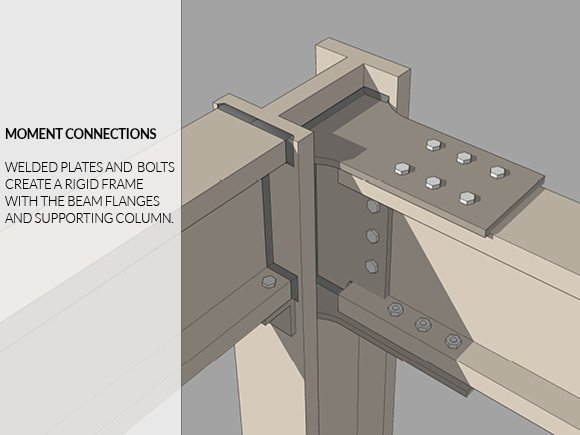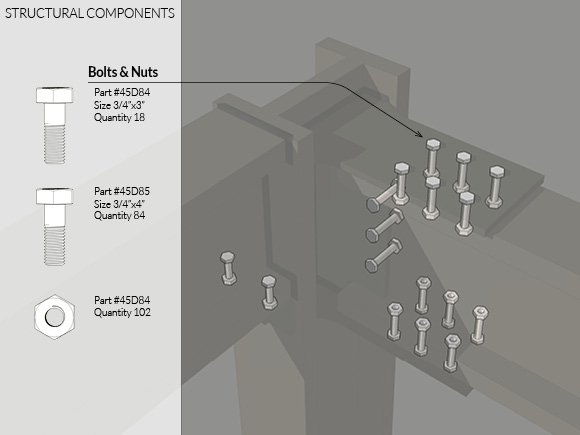Yelena Prusakova was an illustrator at Fat Pencil Studio from 2013-2017.
The iconic skeletal structure of a steel building is normally concealed when construction is completed. I've made an animation of a mock steel building construction sequence to highlight the significance of different building elements. It begins with columns and beams that are further stabilized with joists and decking to form a frame. A non-load bearing curtain wall hangs on these bones. Gypsum sheathing, and a water resistant barrier such as Tyvek seal off the interior. A rainscreen turns back most rain and wind, while allowing airflow behind the assembly so that the wall assembly will dry out after a storm.
Below are some 3d diagrams I developed to illustrate standard steel details. I used two different graphic methods: slide highlights and a single-image section-cut with callouts.

After this recent study of steel construction, I was primed to appreciate the Seattle Public Library, designed by Rem Koolhaas, which has a serious steel curtain wall! I read a little bit about this building having seen it for the first time this past weekend. Illustrator David Badders does a good job of visually describing its use of space, engineering and facilities.
Although the walls' diamond shapes are consistently modular, their junctions form hundreds of unique corners. Ongoing collaboration between the architect and German manufacturer ensured that no stone was left unturned in this process—particularly in the area of weatherproofing. Later, Hoffman Construction laser scanned the building at the end of each day to make sure things were aligned and "squared" away. (See picture below of aluminum mounted on steel).
A few blocks away is the Rainier Tower, designed by Minoru Yamasaki who is also credited with New York City's World Trade Center. By contrast the Rainier Tower has load-bearing walls, which allow it to have a tapered concrete base while still being rated for seismic activity (whoa!).
-

A corner of the Seattle Public Library
-

Sound insulation on the top floor
-

Aluminum attached to steel
-

Rainier Tower
-

Rainier Tower






















